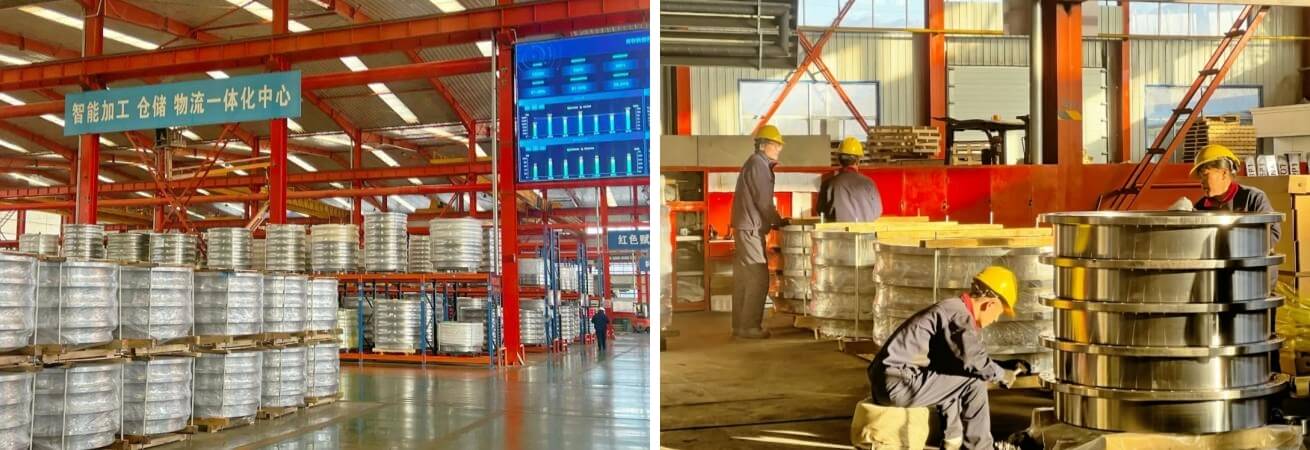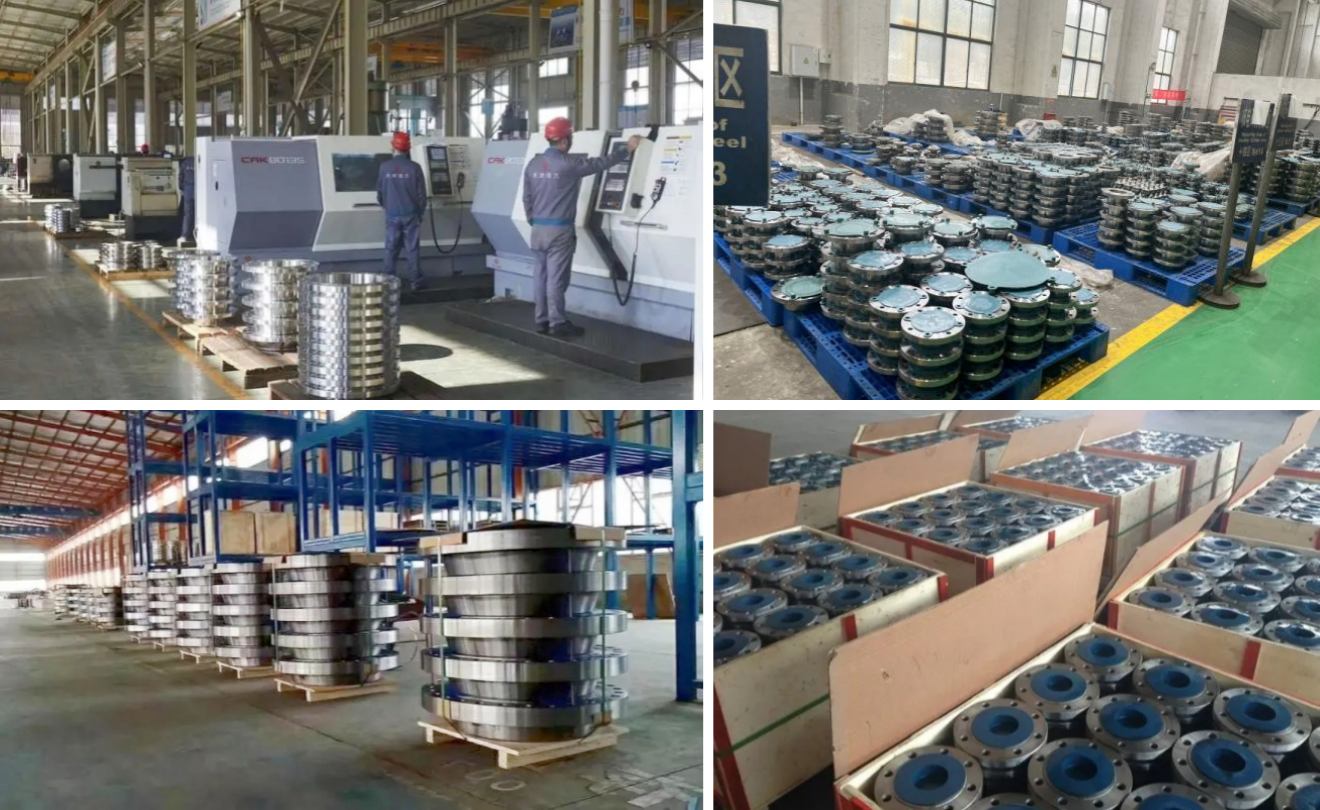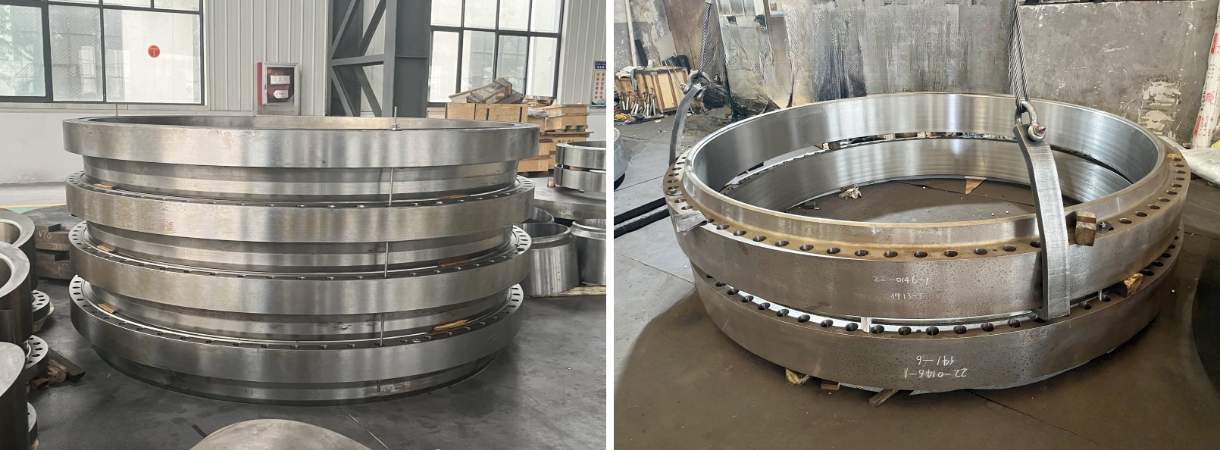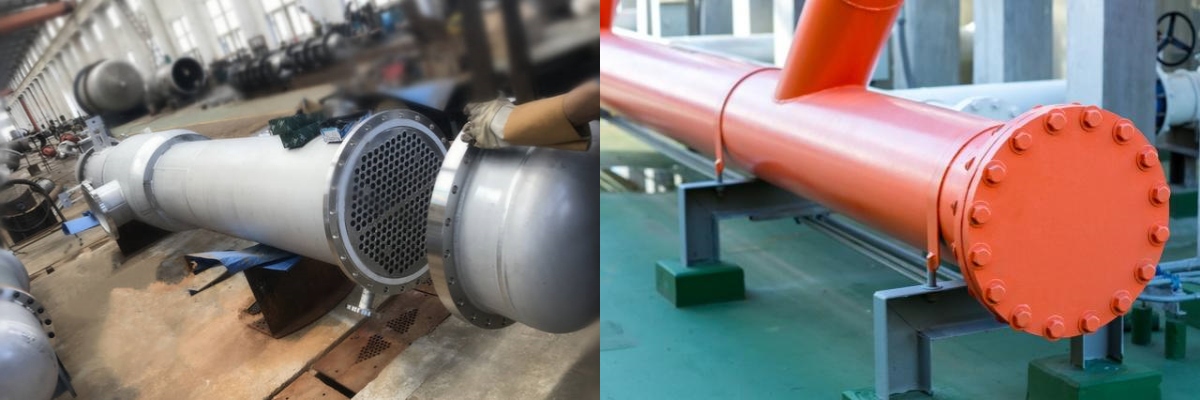
What Are You Looking For?
What is a pipe flange?
Pipe flange: a pipe fitting that connects two pipes or equipment. It can be tightly connected to pipelines or equipment through bolts, forming a complete connection. Pipe flanges are widely used in industrial fields such as petroleum, chemical, food, medicine, textile, machinery, etc., The types include weld neck flanges, slip on flanges, blind flange, lap joint flange, spectacle blind flange,spade ring & spacer ring blind flange. They are an important component in pipeline systems.

The functions and uses of pipe flanges mainly include:
1. Connect two pipes with different diameters so that they can be connected together to form a pipeline system.
2. Connect the fittings and valves to ensure a tight fit and achieve a sealing effect.
3. Install pipe flanges on the equipment to secure the pipes and prevent them from moving or falling off.
In pipeline design, it is often necessary to use pipe flanges to connect pipes of different lengths to meet engineering requirements.
In some mechanical equipment, such as pumps and compressors, pipe flanges are also required to connect components.
Overall, pipe flanges are one of the most widely used components in pipeline connections, playing an important role and purpose.

What is a Pressure vessel flange?
Pressure vessel flange: It is a specialized flange used to connect pressure vessels and has the characteristics of high pressure and high temperature. It usually consists of a pair of flanges, several bolts, nuts, and a gasket. The sealing surfaces of pressure vessel flanges are divided into flat and concave convex types, which are suitable for different pressure levels and diameter requirements. Its function is to combine different compression components together, while ensuring that there is no leakage at the connecting parts
Pressure vessels are widely used equipment in the industrial field. Due to process requirements, the installation and maintenance of equipment components, and the convenience of manufacturing and transportation, pressure vessels often require detachable structures. As a basic component connecting various pressure vessel components, the design and manufacturing of pressure vessel flanges must comply with relevant standards and specifications to ensure their safe and reliable operation.
When designing pressure vessel flanges, it is necessary to consider the effects of factors such as pressure, temperature, medium, bolt force, and gasket usage. When selecting flange materials, factors such as mechanical properties, corrosion resistance, high temperature resistance, and processing performance need to be considered. At the same time, design work such as strength calculation and fatigue analysis is also required to ensure the strength and reliability of the flange.
In general, pressure vessel flanges are the basic components that connect various pressure vessel components, with characteristics of high pressure and high temperature. They need to be designed and manufactured strictly in accordance with relevant standards and specifications.

There are differences between pipe flanges and pressure vessel flanges in multiple aspects:
Structure: Pressure vessel flange is a type of flange with a large diameter and thickness, commonly used to connect pressure vessels and equipment. Its main characteristics are thick structure and high strength. Pipe flange is a small and thin flange, commonly used to connect pipes and fittings. Its main characteristics are lightweight structure and slightly lower strength.
Installation method: When installing pressure vessel flanges, it is generally necessary to use a large jack and achieve sufficient tightening force through prestressing method. The pipe flange is usually tightened with expansion bolts or nuts during installation.
Material: Due to the different usage environment and pressure resistance of the two types of flanges, the material also varies. Usually, pressure vessel flanges need to withstand relatively high pressure, so the materials used will be more durable, such as carbon steel, alloy steel, etc. The material of pipe flanges is generally relatively lightweight, and the materials used are mostly ordinary carbon steel, steel plates, stainless steel, etc.
